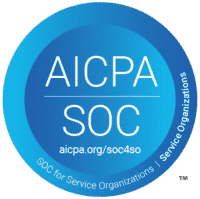Feedback should never be an endpoint, but a valuable step in the self-regulated learning process. The processing of feedback and acting upon the received feedback is even more important than receiving feedback itself. To stimulate the active processing of feedback, you can choose to provide feedback verbally instead of a written format. Moreover, audio-recorded feedback provides a couple of additional advantages.
Upon popular request, we have added the feature of adding audio-recorded feedback within Portflow. Any feedback within Portflow can now be enriched with an audio-recording. The audio can directly be recorded while viewing a piece of evidence or while scrolling through a collection. This feedback can also be played back inside the portfolio.
Advantages of audio-recorded feedback
There are multiple advantages to using audio-recorded feedback. Especially within the context of self-regulated learning facilitated by a portfolio. Both the provider as well as the receiver of feedback can benefit from these advantages:
- Activate feedback processing
Employing audio-recorded feedback adds an extra step that stimulates the active processing of feedback. Apart from listening to the feedback, which is a passive activity, the student is stimulated to actively process the feedback. This can for example be done by taking notes, in order to be able to fully make use of every aspect mentioned within the narrative, as it is harder to go back to a mentioned argument in an audio fragment compared to written texts. Therefore, students are more likely to actively process the feedback they receive, leveraging deeper understanding and higher impact on the learning process. - More nuanced feedback
Compared to written texts, in which the reader is required to interpret the tone of voice by himself, audio feedback provides much richer opportunities for nuance. For example, the tone and stress the speaker puts on various parts of the narrative can much more clearly convey the intent and importance of every aspect of the feedback. Thus, adding audio makes feedback more authentic and less prone to misinterpretations. - Speed up the review process
For feedback providers, especially teachers, coaches, and experts that are requested to provide feedback to many students on a regular basis, writing down feedback can prove to be somewhat time-consuming. In most cases, it is much quicker to record your verbal feedback than to type it out. - Overcome reading difficulties
Audio-recorded feedback provides a lower threshold for students, making feedback more accessible. Especially for those who are plagued by reading difficulties such as dyslexia.
For many reasons, audio-recorded feedback provides a valuable additional channel to use in the feedback process. As feedback is a crucial tool to provide scaffolding in a self-regulated learning process, it is important to maximize it’s effectiveness. As in most cases, the advantages and disadvantages are also dependent on the personal preferences of the involved individuals. However, we encourage you to give it a try and find out what works best for you. We’re always open to more feedback and love to hear from your experiences and ideas.



